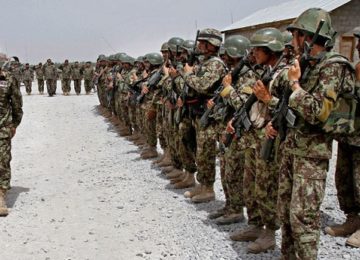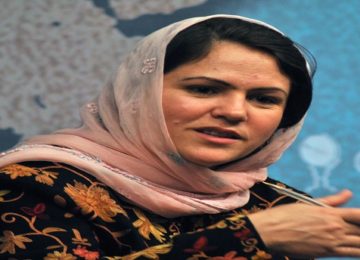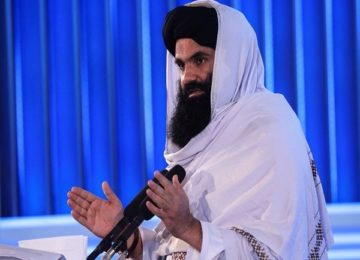Our heads hang in shame and hearts bleed as survivors and families mourn the brutal deaths of at least 29 in the twin suicide bombings in Kabul on April 30. On April 22, an IS-K suicide bomber attacked a voter-registration center in Dashte Barchi, an area of Kabul where many Shi’a Afghans live. This followed another IS-K suicide attack on crowds gathered in Kabul to celebrate the Persian New Year in late March leaving a trail of death, with at least 31 innocent Afghans.
These two attacks were, according to ISIS, were carried out by two bombers named “Kaaka al-Kurdi” Khalil al-Qurashi, suggesting they were both of Kurdish origin. They also turned out to be the deadliest for media, making it at least 36 journalists/media workers since 2016.
These statistics beg the question as to whether one can decipher the ever growing footprint of Daesh /ISIS in Afghanistan’s already precarious circumstances? Apparently its almost impossible as there is little method in the madness that the ISIS is piling on Afghans.
Afghan intelligence and security officials believe that Daesh is present in nine provinces from Nangarhar and Kunar in the east to Jawzjan, Faryab, and Badakhshan in the north and Ghor in the central west.
Since June 2014, when ISIL proclaimed itself to be the Islamic State, according to a running count kept by CNN, this amorphous group has “conducted or inspired” over 70 attacks in 20 countries, including Afghanistan (excluding Syria and Iraq though).
Escalation by ISIS , and the launch of Al-Khandaq operation by Taliban coincides with at least 215 missions on various targets inside Afghanistan by the US Central Command Combined Air Operations since January this year (a UN report recorded 950 air strikes in 2017, while the US Air Force’s figures for 2017 were 4,361 strikes during 1,248 missions).
These missions since January this year, have largely targeted, though not restricted to, Islamic State of Khorassan (IS-K). One of its commanders in northern Afghanistan, Qari Hikmatullah was killed on April 5 in a US Special Operations Forces and the Afghan Special Security Forces (ASSF) joint operation. Another two IS-K platoon commanders, Omair and Abu Samaya, were taken out in January 28. Afghan forces had also captured their predecessor, Khitab Aka, in Jowzjan.
As a whole, the security situation in Afghanistan is not promising at all.
“In looking at South Asia and Afghanistan, we assess the overall security picture will modestly deteriorate in the coming year and Kabul will continue to bear the brunt of the Taliban-led insurgency. Afghan National Security Forces face unsteady performance, but with Coalition support, probably will maintain control of most major population centers,” says Dan Coats, Director of the US National Intelligence, as quoted in the latest report by the Special Inspector General for Afghanistan Reconstruction ( SIGAR), John Sopko.
SIGAR also claims a sharp – ten percent – decline in the numbers of the Afghan security forces, attributing the decline mainly to desertions and high casualty rates.
One wonders if the Taliban infighting and the rise of Daesh has also contributed to the attrition within the Afghan forces, particularly since late 2017, when the Iranian and Russian officials began amplifying the threats that the mysterious ISIS – reportedly comprising Chechens, Uzbeks, Chinese Uighurs and some Arabs -began posing to Afghanistan and the region.
In February, this year the Iranian Defense Minister Brigadier General Amir Hatami accused the US of “transferring” Daesh to Afghanistan to justify its military presence in the South Asian country.
In the same month, Russian Foreign Minister Sergei Lavrov rebuffed denials by Washington and NATO on the presence of Daesh terrorists in Afghanistan. Russian officials speak of the presence of about 10,000 Daesh terrorists in Afghanistan, saying their number was growing due to the relocation of the terror outfit to the Central Asian country after territorial defeats in Syria and Iraq.
In November l2017, even former President Hamid Karzai had accused the United States of collusion with Daesh for geo-political objectives.
Now, regardless of the veracity of these claims and allegations, the reality on ground is quite stark and intimidating. Afghanistan remains in the grip of excruciating violence. ISIS/Daesh seems to have trumped Al-Qaeda as an external entity that is out to kill and maim people across the board. Fugitives from the Gulf, Central Asia and South East Asia as well as veterans of the Libya-Iraq-Syria war also seem to be joining these hordes of hired assassins.
This alliance of terrorists requires the countries of the region to join hands and raise a bulwark against all such forces, including Daesh, AlQaeda and all those Taliban who have been mercilessly butchering innocent people in Afghanistan, Pakistan and elsewhere. Geopolitics has taken a heavy toll on the socio-political life in the region. By serving as pawns in geo-political wars smaller countries in the region are bound to lose only. They should, therefore, invest in their own stability through strategic and economic cooperation, instead of at relations with neighbours through the security prism.
The author Imtiaz Gul is the Executive Director of the Center for Research and Security Studies (CRSS), Islamabad. This story originally appeared in Daily Times on May 2, 2018. Original link.








